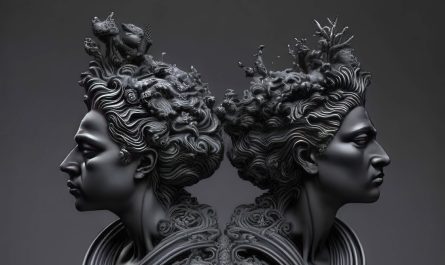Last Updated on November 14, 2022 by Avia
Symbolism in Writing
Symbolism is a literary device that can be used to represent abstract ideas. It is a way of communicating meaning through symbols and images. Symbolism in writing is used to create depth, develop characters, and it’s a brilliant way to enrich a plot or convey a deeper meaning.
Table of Contents

Why is Symbolism in Writing Important?
There are many reasons why symbolism is an important factor in writing. Firstly, it makes your work more interesting to read and helps you convey your ideas more powerfully. Secondly, it engages your readers, making your writing super-compelling. If you’re a student, using symbolism when writing your essays can help you get better grades because teachers often give higher marks for essays that include symbolism.
There are many ways to use symbolism in writing to offer your essay abstract ideas in a more convincing and in-depth way, just like what CustomWritings and other similar essay writing services do every day. So whether you’re an academic or a writer hoping to compose a best-selling novel – symbolism in writing is your #1 tool for a superiorly crafted literary masterpiece.
What is Symbolism in Writing?
Symbolism is woven into writing to represent some object, action, or idea. They can be words, images, or objects that differ from their literal meaning. Symbols are used in different ways in our everyday lives. They are used to portray certain ideas and emotions as well as represent an entire culture or society.
Symbols can be found in online advertisements, flags, logos, and more. Symbolism in writing is a bit more subtle, as no actual symbols are used, but meaningful connections are made that conjure connection and create a more enriching experience for your readers.
The History of Symbolism in Writing

Symbolism in literature has a long history. A well-known, early example of a symbol representing an idea was the Egyptian hieroglyphs, which were developed around 3200 BC. The ancient Greeks and Egyptians used symbolism in their writing to communicate with the gods. They believed that everything had a spirit or soul, and some things had more than one soul or spirit inhabiting them at once.
The Egyptians believed that images were necessary for the afterlife and used symbols to stay in touch with their gods and goddesses. They carved hieroglyphics on tombs, temples, and on other structures and items so their culture would live on even well after their deaths. The Greeks also used symbolism in their writing. Today, symbolism is used in modern-day professional essay writing, academic papers, advertising, periodicals, and novels because it adds flavor to literature and gives a deeper meaning.
Types of Symbolism
There are three main types of symbolism that are used in literature, essays, or any type of writing. The first type is called “literal symbolism,” when a physical object symbolizes something else. The second type is called “figurative symbolism,” when a physical object can represent an abstract idea or concept. The third common type of symbolism is called “symbolic analogy,” which occurs when one thing symbolizes another thing and has similarities. Let’s take an in-depth look at each of them.
Literal Symbolism
Literary symbols are often used in literature to represent something intangible. They are a way for the writer or author to convey their message without explicitly saying it. One literary symbol that has been used for centuries is the rose. The rose can be seen as a symbol of love, beauty, and loyalty.
Literary symbolism in literature has been around for centuries and can be seen as a way for authors to convey their message without explicitly saying it.

Figurative Symbolism
Figurative symbolism is a form of symbolism that relies on the use of images, objects, and actions to represent abstract concepts. This type of literary symbolism is often used in literature and other art forms to provide a more complex meaning than words alone can convey.
The most common form of figurative symbolism is personification. Personification is when an abstract concept or inanimate object is given human characteristics. For example, an author might say that the wind “whispers” through the leaves on a tree or that a mountain “grew taller” as it reached for the sky.
Symbolic Analogy
A symbolic analogy is a literary device that compares two different objects, ideas, or events to show that they are similar in some way. It compares two things, one of which is usually abstract or intangible.
Symbolic analogy can describe an abstract idea by comparing it to a more concrete object. For example, the phrase “sorrow is like a dark cloud” illustrates the idea of sorrow being heavy and dark with the use of a more concrete object: clouds.
Ways to Use Symbolism in Writing

In literature, symbolism creates different responses in the readers. Here are the top five ways symbolism in writing can be used and its common effects in literature:
Adding Emotions
In literature, symbolism can be used to add emotion to the story and make it more relatable. For example, in the novel The Great Gatsby, the green light at the end of Daisy’s dock symbolizes her love for Gatsby. It also symbolizes his hope that they will one day be reunited.
Connecting Themes
The use of symbolism creates a connection between the story and the reader. Symbolism connects themes in an essay, poem, or short story. It can be as simple as a word or phrase that ties together two ideas in an obvious way or is more complex.
Adding Imagery
Symbolism is often used in writing to add imagery and meaning. The use of symbolism in writing can help a reader to imagine what is happening in the story. It can create moods, emphasize points, or show connections between characters and events.
Concealing a Darker Meaning
The symbols are used to conceal the meaning and often express a darker meaning or add an extra layer of sense. For example, the use of colors can be symbolic. Red may symbolize death, and white may symbolize purity. In Lord of the Flies, Golding uses both colors to show how dark it is on the island.
Defining Character
Symbolism is a powerful technique that can be used to create complex characters. It makes the character more realistic by giving them flaws, fears, and desires that are not initially visible on the surface. Symbolism allows the reader to see what is happening internally with the character rather than just from their perspective.
Frequently Asked Questions About Symbolism in Writing
An author can use symbolism to foreshadow an event. For instance, a torrential storm can symbolize impending troubles later in the story. Symbols in literature can also clue the reader about a character or a theme in a story. For example, in To Kill a Mockingbird, Harper Lee’s mockingbird is a symbol of innocence. In the original fairy tale of Beauty and the Beast written by Gabrielle-Suzanne Barbot de Villeneuve, the rose is symbolic of hope, purity, and love.
There are many different uses of symbolism in writing. The five common types are myth, metaphor, archetypal, simile, and allegory.
Symbolism needs imagination and creativity in order to be detected and connected with a character, scene, or theme in an essay or story. Symbols are not to be taken literally. Rather, they should flavor the story or allude to something in an effort to convey a message. This is known as nuance, and it prompts the reader to pay close attention to the writing, as well as interpret the writing in order to identify symbolism in writing clearly.
The symbolism of animals, weather conditions, flowers, and colors have been commonly used in writing for eons to convey more meaning than what they are in reality. For instance, a lion prominently featured in C.S. Lewis’ The Lion, the Witch, and the Wardrobe is symbolic of goodness and purity. The field of poppies in The Wizard of Oz written by L. Frank Baum represents sleep, dreams, and stillness of mind.
The Last Word on Symbolism and Writing
To be sure, authors, students, advertisers, and just about anybody who writes should wield the power of symbolism in writing. It is a literary device that can convey emotions, feelings, and messages more strongly. Authors often use symbolism as an allegory for something else. It is, therefore, an effective tool that every writer should master.











